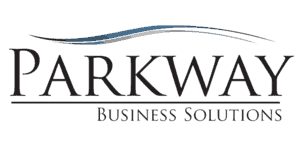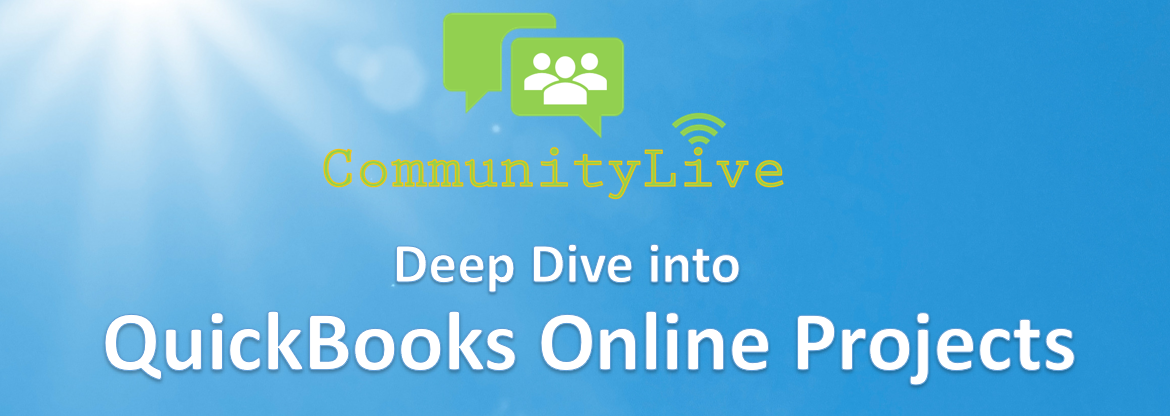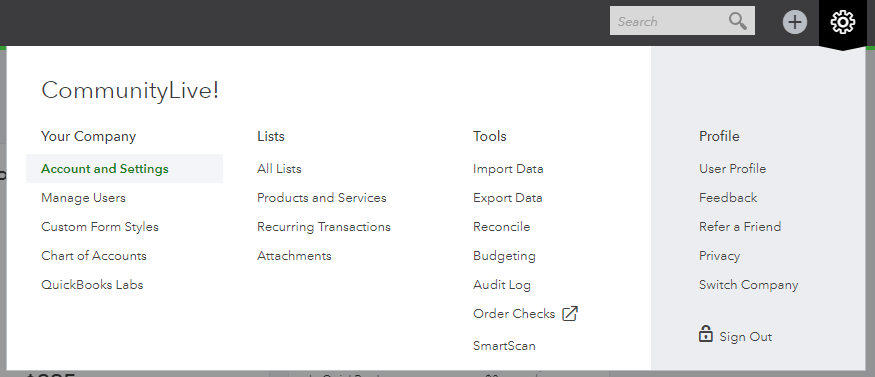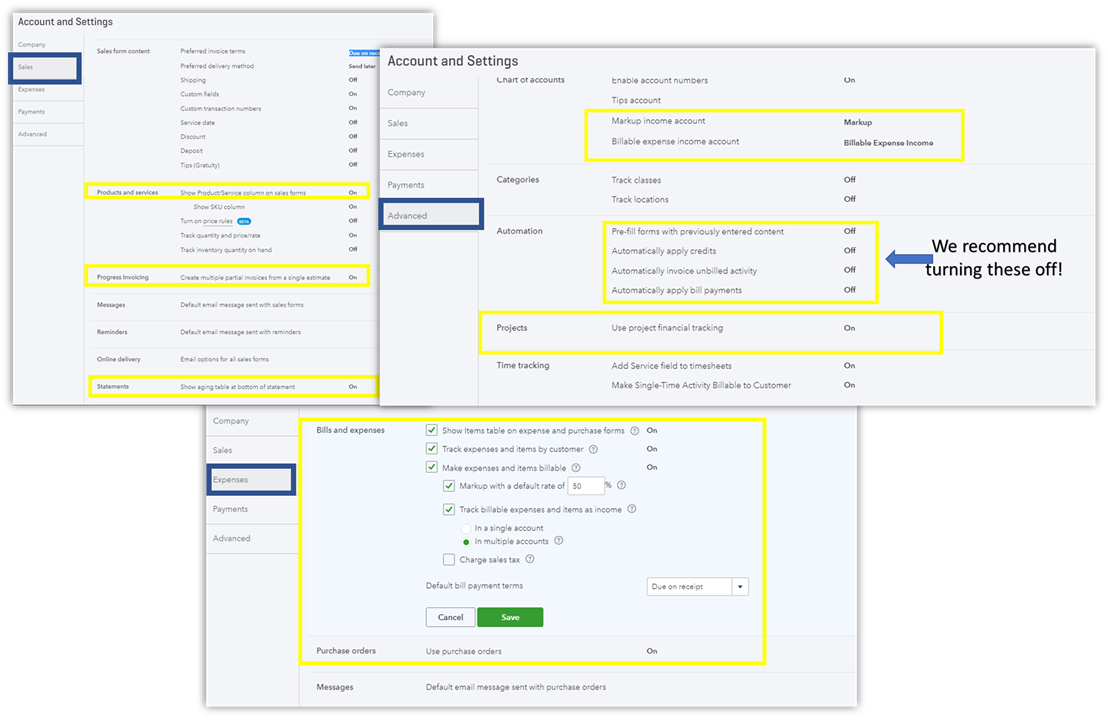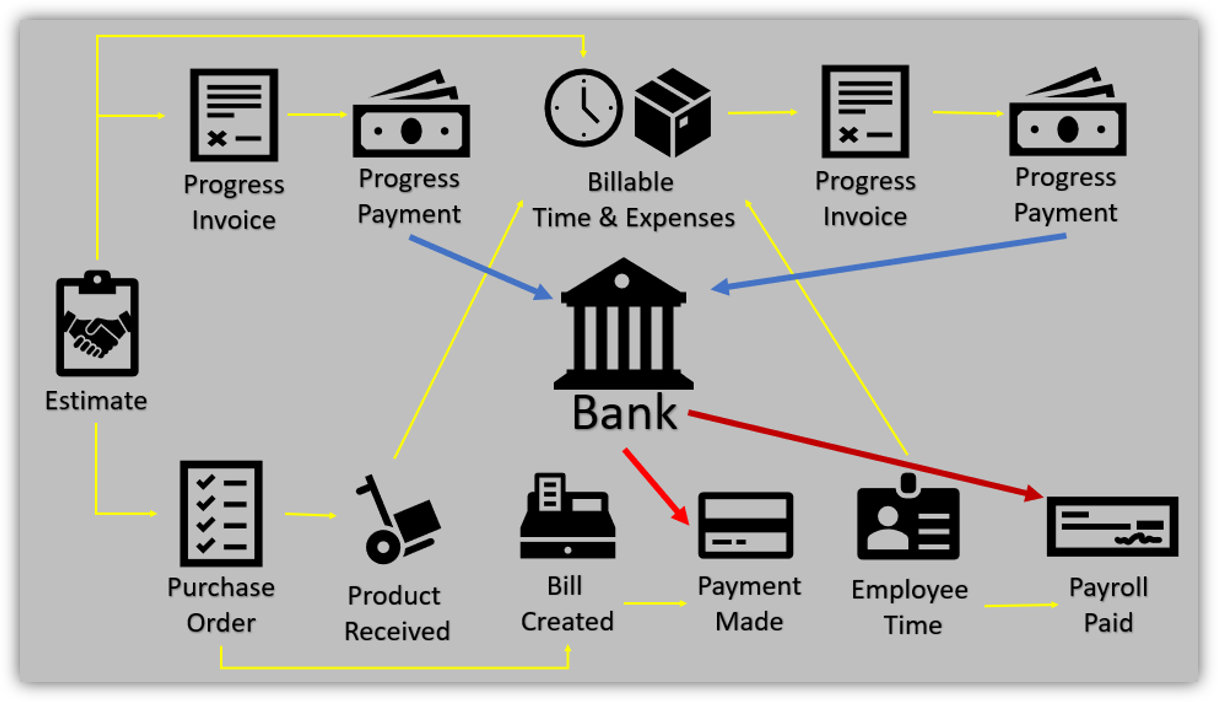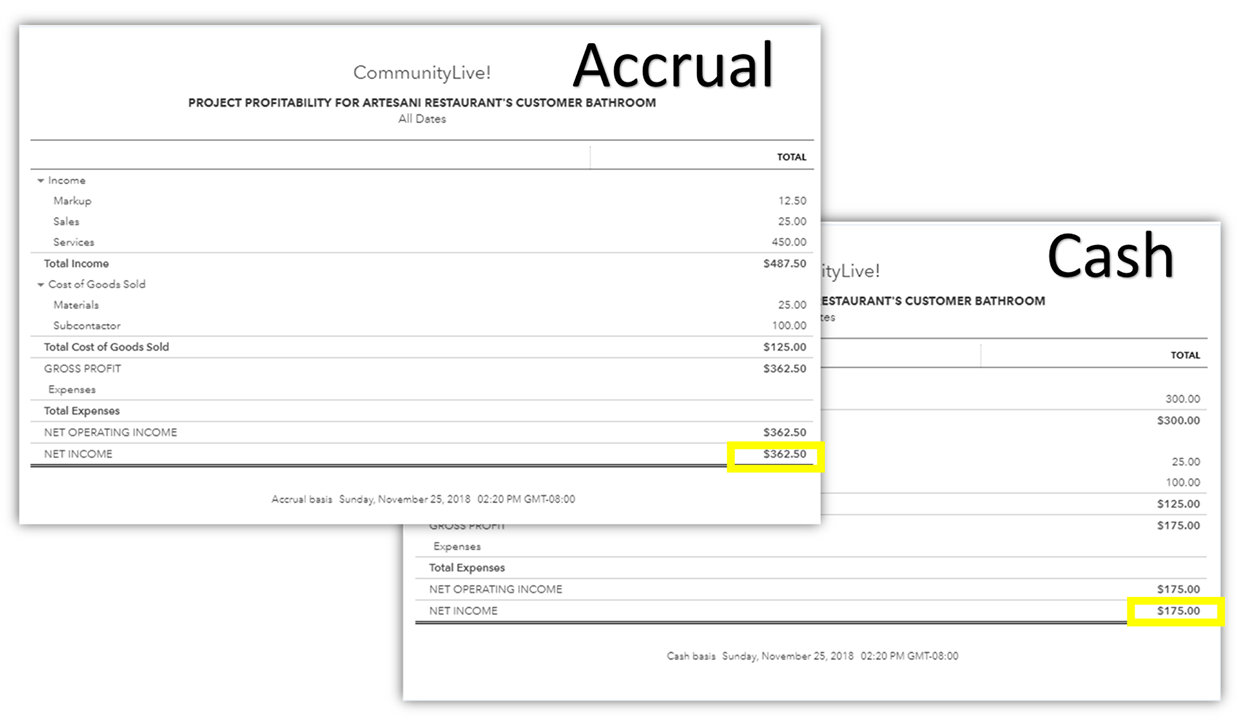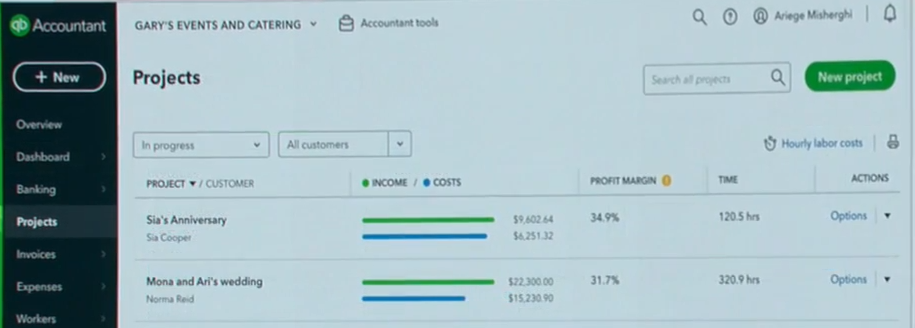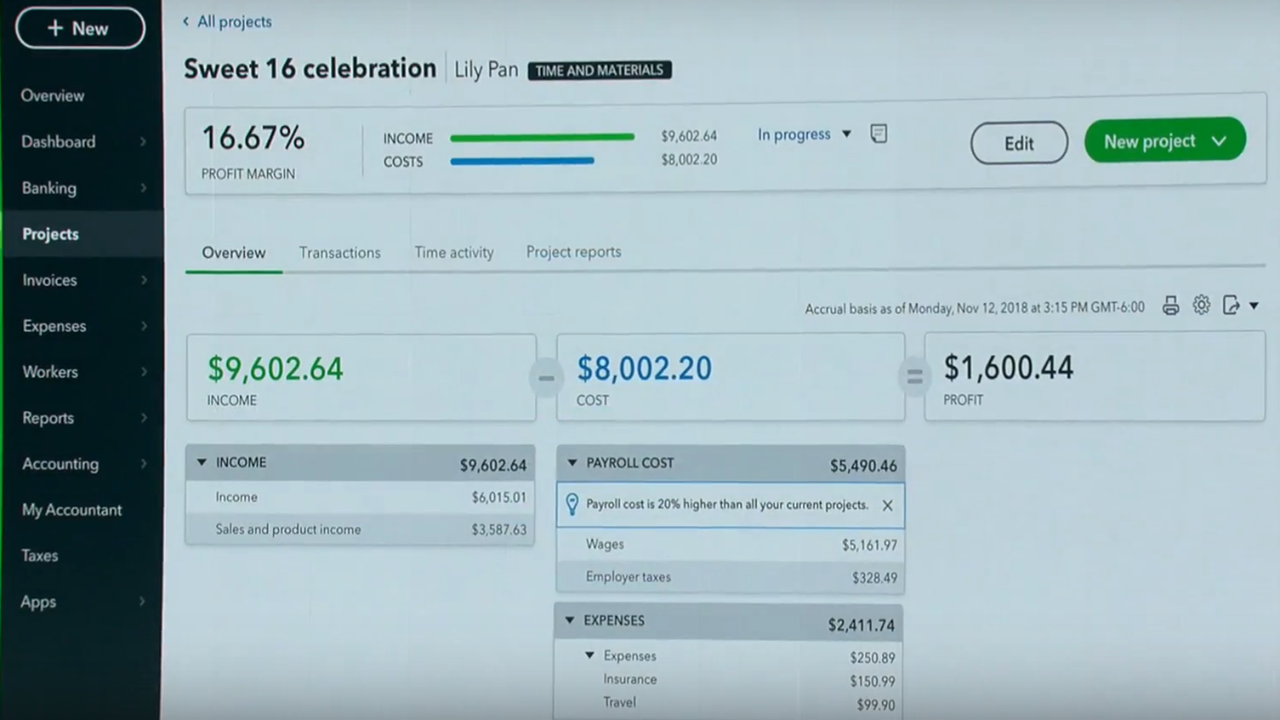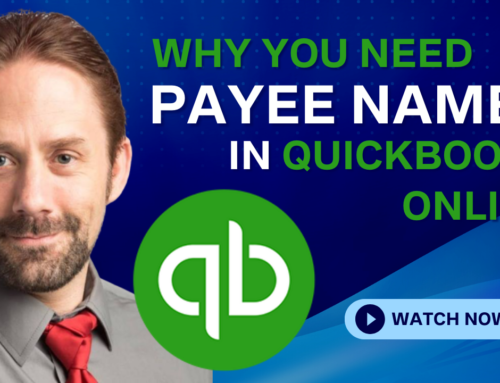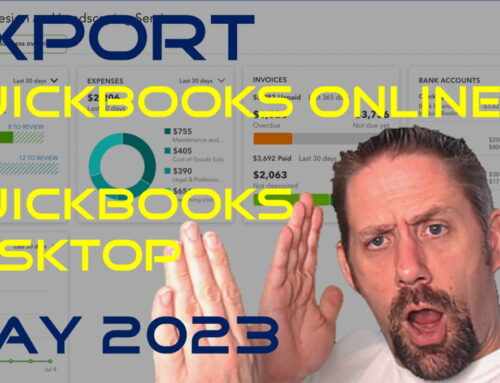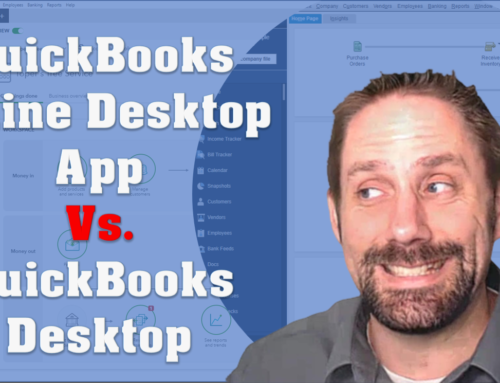How to Use Projects in QuickBooks Online
Setting up your Company File:
Expenses Tab:
- Make expenses and items billable
- You may also want to enter a percentage for the markup
- Purchase orders is turned on
Sales Tab:
- Turn on Progress Invoicing
Advanced Tab:
- Select the pencil icon on the Projects section to turn the feature on.
- Check the Organize all job-related activity in one place box
Creating Your New Items
- Create a new service item using both the sales and purchase descriptions (also known as a two-sided item). This will allow us to take the same item from the estimate and us it on an invoice as well as a purchase order which will be turned into a bill.
- Use the sales description to display anything you want presented on the estimate & invoice.
- Use the purchase description to display anything you want presented on the purchase order & bill.
- Select a Preferred Vendor name to reference while ordering items using a purchase order.
Lynda’s ProAdvisor Tip:
For more on bundles where you can group items together to sell as a package, check out this blog article
“When you pay attention to detail, the big picture will take care of itself.”
-George St-Pierre
Workflow of Creating a New Project:
- Select New Project.
- Enter the Project name (see tip below for best naming conventions)
- Confirm the proper Customer has been selected for the project.
- Select Save.
Matthew's ProAdvisor Tip:
Do not create the project name with the customer name at the beginning. This is very important to ensure that the project is always selected when assigning line items and not the customer by accident. We recommend you give it a unique name as demonstrated in the video. For example, use “bathroom remodel”
Understanding the Project Card in QuickBooks
After selecting the project that you wish to update, QuickBooks Online will display the project’s card where most of your tasks will be started.
Project Profitability:
Non-Billable Time:
Unbilled Time and Expenses:
Transactions Tab:
Select the transactions tab to view all your estimates, invoices, billable expenses, and bills related to this project. It is important to note that expenses that were tagged to the project will not show up in the transaction list, but they do populate on the reporting.
Add to Project Drop-down:
Lynda’s ProAdvisor Tip:
Track your Estimates and keep track of them. Was the Estimate pending, rejected, accepted or closed? It will help you track your closing ratio.
The Two Paths of Project Profitability:
To simplify the workflow, there are two types of transactions that are applicable to job costing: Money In and Money Out.
MONEY IN LOOP:
- Create an Estimate. Make the estimate to the project name
- Turn an Estimate into an Invoice with Progress Billing
- Receive a Payment on the Invoice
- Review the Profit and Loss
- Turn Time Activity into an Invoice
- Turn the Billable Expense into an Invoice
- Receive a Payment on the Invoice
- Review the Profit and Loss
MONEY OUT LOOP:
- Create an Estimate
- Turn Estimate into a Purchase Order
- Receive a partial Purchase Order and create a Bill
- Make a Bill Payment
- Review the Profit and Loss
- Add in Time Activity
- Create a Billable Expense
- Make a Bill Payment
- Review the Profit and Loss
As discussed in the video, reports may look different based on your chosen accounting method. Accrual basis will show the transactions at the bill and invoice level. Cash basis reporting will show on the reports with the bill payment and invoice payment level.
